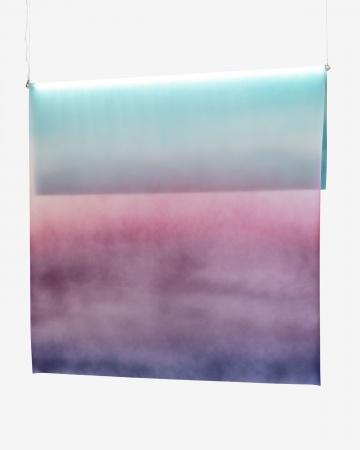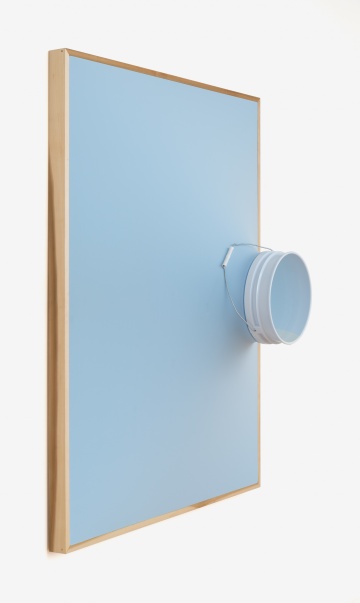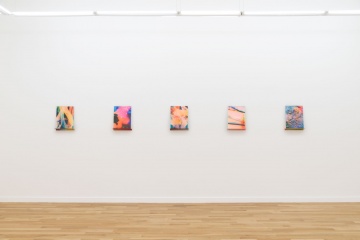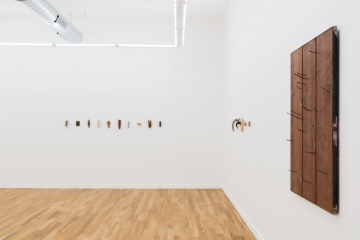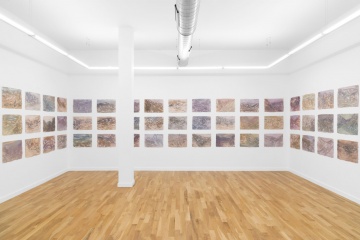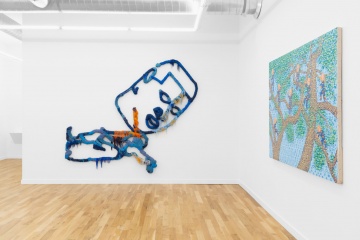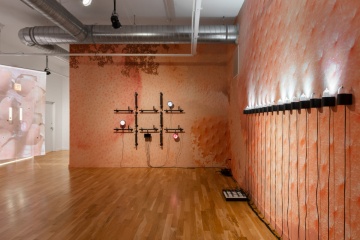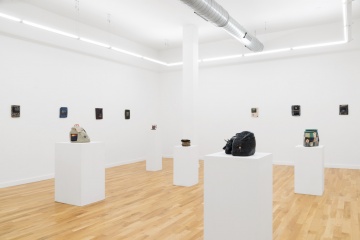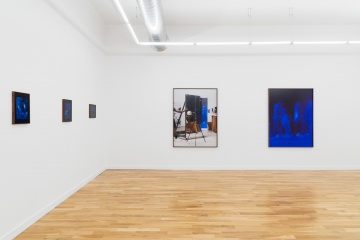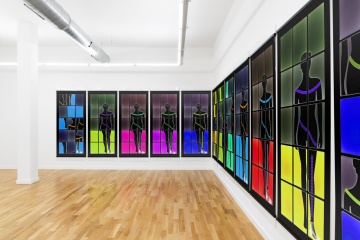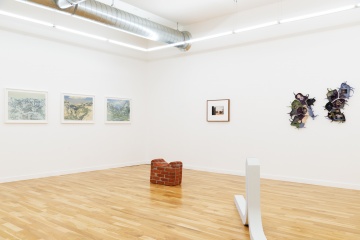DOCUMENT
1709 West Chicago Avenue
Chicago, IL 60622
312 535 4555
Chicago, IL 60622
312 535 4555
DOCUMENT is a commercial gallery located in Chicago and Lisbon that specializes in contemporary photography, sculpture, and media based art. The gallery has organized more than 70 solo exhibitions since its opening in 2012 and actively promotes the work of emerging and established national and international artists.
In our Chicago location, we conjointly operate as a photographic printmaking studio facilitating the production of works by artists from Chicago and around the world.
DOCUMENT is a member of the Art Dealers Association of America, the New Art Dealers Alliance, EXHIBITIO – Associação Lusa de Galeristas (Portuguese Gallery Association), and the International Galleries Alliance.
Artists Represented:
Elizabeth Atterbury
Geraldo de Barros
Kiah Celeste
Julien Creuzet
Anneke Eussen
Victoria Fu
Gordon Hall
Laura Letinsky
Erin Jane Nelson
Natani Notah
John Opera
Sara Greenberger Rafferty
Paul Mpagi Sepuya
Tromarama
Andrew Norman Wilson


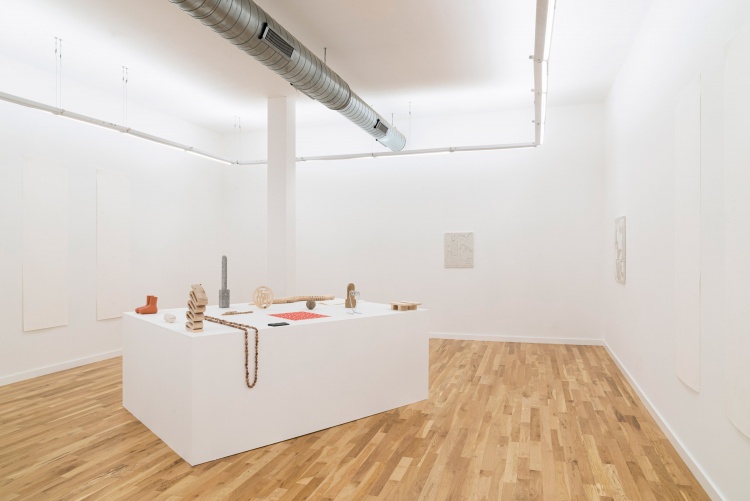

Paul Mpagi Sepuya: Stage
Elizabeth Atterbury: Letters and Souvenirs
Elizabeth Atterbury: Letters and Souvenirs
Luísa Jacinto
Things change quickly
November 7, 2025 - December 20, 2025
DOCUMENT is delighted to present Things change quickly, Luísa Jacinto’s first solo exhibition in the US, opening on November 7, 2025.
Jacinto’s artistic practice engages with the protocols of the image, narrative fragmentation, and the tension between excess evidence and obscuration. Working with materials such as rubber membrane, thread, fabric, metal, spray, watercolor, loose pigments, she creates works that establish an increasingly fluid boundary between painting, sculpture and installation.
For her inaugural exhibition at DOCUMENT Chicago, Luísa Jacinto modifies the viewer’s perception of light and space through an installation of works from two recent series, Strangers and Work in Space. Together, these bodies of work imbue the gallery with layers of colors, bleeding into one another and influencing their surroundings.
Suspended from the ceiling, taking over the middle of the space and set against the surrounding walls, several works from the Strangers series—made up of synthetic rubber membranes, folded and draped over suspended LED tubes that act as both support and light source—sway as visitors approach and walk between them. Work in Space is a series that bridges the gaps between drawing, sculpture and installation: colored threads, arranged in a grid-like composition, run across the gallery wall, as if tracing lines with colored pencils.
In Things change quickly, Jacinto’s works form a polychromatic cloud where transparency, layering, and spatial relationships are interdependent of the viewer’s trajectory and attention, constantly shifting.
Luísa Jacinto (b. 1984, Lisbon, Portugal) lives and works in Lisbon. Solo exhibitions include My shadow is yours, Parra & Romero, Madrid, Spain (2025); Shining Indifference, MAAT Museum, Lisbon, Portugal (2024); The idea of returning, Galeria Quadrado Azul, Lisbon, Portugal (2022); Stone-Veil, Artworks, Lisbon, Portugal (2019); We had the experience but missed the meaning, galería silvestre, Madrid, Spain (2018); A single day is enough, Museu Carlos Machado, Açores, Portugal (2012). Jacinto’s works have been shown in group exhibitions including: Exhibit C, DOCUMENT, Lisbon, Portugal (2025); It’s the scenery that moves (joint exhibition with Isa Melsheimer), Brotéria, Lisbon, Portugal (2022); Painting, Observation Field, Cristina Guerra Contemporary Art, Lisbon, Portugal (2021); PADA, ASC Gallery, London, United Kingdom (2019); Saudade – Unmemorable Place in Time, Fosun Foundation, Shanghai, China and Museu Coleção Berardo, Lisbon, Portugal (2018). Her works are in the collections of Fundação Calouste Gulbenkian, Lisbon, Portugal; Fundação EDP, Lisbon, Portugal; Colecção Figueiredo Ribeiro, Portugal; Coleção Arte Contemporanea do Estado, Portugal; Núcleo de Arte Contemporânea da Câmara Municipal de Lisboa, Lisbon, Portugal, among others.
Kiah Celeste and Gordon Hall
Artifact Unidentified
September 12, 2025 - November 1, 2025
DOCUMENT is delighted to present Artifact Unidentified, a two-person exhibition of recent sculptural works by Kiah Celeste and Gordon Hall. Opening on September 12, the exhibition will remain on view through November 1, 2025.
Kiah Celeste’s practice is made up of materials and objects gleaned from urban and industrial contexts, repurposed and combined in sculptures and installations with a post-minimalist bend. Her latest body of work takes on a pared down, yet striking, form: monochromatic pieces of spandex, stretched in poplar frames and installed on the gallery’s walls, playfully incorporate a set of found materials. Extending well beyond the frame to rest on the floor, a large piece of Corian towers within Distent. In Skydrool, a used paint bucket emerges from the center of another frame. Little Apple of Paradise’s frayed bungee cord maintains tension between a cream field of fabric and glass that rests against the floor. Installed bridging a corner, Four Shores’ frames hold plastic cords in tension.
Gordon Hall’s sculptures often take the form of pieces of furniture or domestic objects, meticulously reproduced in materials such as cast concrete, wood, or brass. These ambiguously functional works are often employed by performing bodies in Hall’s performances. The works on view in Artifact Unidentified represent a body of work made for the recent exhibition at ICA Boston, Believers: Artists and the Shakers. Taking cues from artifacts in the Shaker Museum’s collection of over 18,000 objects, sometimes joining discrete elements or extending their dimensions, Hall also introduces diligent interventions such as the steel nails fixed to the underside of Rocker or coloring Knob Weight with red pencil.
Kiah Celeste (b. 1994, Brooklyn, NY) lives and works in Louisville, KY. In 2016 she received a BFA in photography from the State University of New York at Purchase. Solo exhibitions include Swivel Gallery, New York, NY (2025), DOCUMENT, Lisbon, Portugal (2023), DOCUMENT, Chicago, IL (2022); Swivel Gallery, Brooklyn, NY (2022); KMAC Contemporary Art Museum, Louisville, KY (2021); Quappi Projects, Louisville, KY (2021). Group exhibitions include The Carnegie, Covington, KY (2025), Salon 94, New York, NY (2025); Mary M. Torrgler Fine Arts Center, Newport News, VA (2024); Speed Art Museum, Louisville, KY (2023); University of Kentucky Art Museum, Lexington, KY (2021); Centre d’Art La Rectoria, Sant Pere De Vilamajor, Barcelona, Spain (2020); and Dadapost, Berlin, Germany (2018).
Gordon Hall (b. 1983, Boston, MA) is a sculptor, performance-maker, and writer based in New York. Notable solo exhibitions include The Kitchen, New York, NY (2025); the Portland Institute for Contemporary Art, Portland, OR (2019); the Renaissance Society, Chicago, IL (2018); and the MIT List Visual Arts Center, Cambridge, MA (2018). Hall’s sculptures and performances have been exhibited in group exhibitions at the ICA Boston, Boston, MA (2025); Center for Maine Contemporary Art, Rockland, ME (2022); AIR Gallery, Brooklyn, NY (2021); the Verge Center for the Arts, Sacramento, CA (2019); The Drawing Center, New York, NY (2018); David Zwirner, New York, NY (2018); and the Whitney Museum of American Art, New York, NY (2015). Gordon Hall is Assistant Professor of Sculpture at Vassar College. They hold an MFA and an MA in Visual and Critical Studies from the School of the Art Institute of Chicago and a BA from Hampshire College.
Victoria Fu
Lather Cactus Drape
June 13, 2025 - August 2, 2025
Victoria Fu’s third solo exhibition with DOCUMENT features a new series of glass artworks that are at once sculptures, paintings, photographs, and prints. Reflecting her ongoing interest in the mediation of perception through technology, these works quote the visual qualities of LCD screens through material and figural representations of iridescence. By layering digitally-derived, lens- and scanner-based imagery onto painted glass and aluminum surfaces, light and color are constructed and refracted in physical ways to evoke—and to riff off of—the idiosyncratic and seductive apparatus of our engagement with the virtual world. The exhibition also includes a video on a monitor, filtered through a glass sculpture, blurring further the boundaries between screen and object. This body of work continues her exploration of how material processes and technological aesthetics intersect to challenge the viewer’s engagement with surface, depth, and temporality.
Faheem Majeed
All of the Parts
April 18, 2025 - June 7, 2025
DOCUMENT is delighted to present All of the Parts, Faheem Majeed’s first solo exhibition with the gallery. Opening on April 18, 2025, the exhibition comprises two distinct bodies of newly realized works by the Chicago-based artist, curator, educator, and non-profit administrator.
Pedro Vaz
Beginner's Mind
February 28, 2025 - April 12, 2025
DOCUMENT Chicago is pleased to present Beginner's Mind, a solo exhibition of 108 paintings on Indian cotton paper, a video, and two maps by Portuguese artist Pedro Vaz (b. Maputo, Mozambique, 1977).
Pedro Vaz’s exhibition Beginner’s Mind began long before he conceived it. One could say its origins trace back thirty-five years, to 1991, when artist Rui Calçada Bastos, then twenty years old, set out on a trek through the Indian Himalayas—an experience that later gave rise to the photographic series Paisagem para Desaparecidos II (“Landscape for the Disappeared II”, 2018). But its roots stretch even deeper, to the formation of the mountains themselves over 45 million years ago—peaks near Ladakh that have never ceased to shift and evolve.
Julien Creuzet, Natani Notah, John Opera, Tom Schneider, Paul Mpagi Sepuya, Kazuhito Tanaka, Claude Viallat
Exhibit B
January 10, 2025 - February 22, 2025
The exhibition builds upon and expands the themes of investigation explored in the Exhibit A group exhibition in 2024. Bending the limits of traditional media, repeating patterns and shapes, and referencing the history of art, literature, and cultures are some of the aspects which bring together the artists on view as well as DOCUMENT’s program at large.
Anneke Eussen
Beyond purpose
November 1, 2024 - December 21, 2024
DOCUMENT is delighted to present Beyond purpose, Anneke Eussen’s second solo show with the gallery, opening November 1, 2024.
Anneke Eussen utilizes the formal principles of Minimalism evoking geometric seriality, yet quietly deploys hidden narratives and secret histories in her work. Her practice revolves around cultivating and repurposing found materials into meticulously detailed and ghostly wall sculptures. Through layering, arrangement, and assembly interventions, Eussen is never manipulating the original shape of the objects and insists on using their original framework. Through overlapping industrial materials such as stone, glass, and metal, Eussen questions the linguistic and political construction of borders. The works emanate the tangibility of human contact, visualizing the sensuous connection between past, present, and future through our relationship with built space.
Tromarama
Auto Ally
September 6, 2024 - October 26, 2024
DOCUMENT is delighted to present Auto Ally, Tromarama’s second solo show with the gallery, opening September 6, 2024.
In Auto Ally, Tromarama explores the blurred boundaries between leisure and labor, relaxation and productivity, personal and public spheres, especially within the context of the growing platform economy. The works aim to dissect how digital platforms reshape social behaviors and economic practices, highlighting the tensions and contradictions inherent in this evolving landscape.
Erin Jane Nelson
Undersight
June 7, 2024 - August 3, 2024
Erin Jane Nelson’s new body of work centers around a series of ceramic pinhole cameras and their resulting images. Painted in moody glazes and fashioned into abstractions of mythical creatures and animals, the sculptural cameras employ a centuries-old form of proto-photography as Nelson takes them into the landscape to make images. The show’s title, Undersight, is a colloquial term for the condition of sousveillance, which refers to the art and technology of fostering a more personal, civic form of image production from the lens of “underneath” and an intimate human hand, rather than the “eye in the sky” imaging that monitors everything. By using elements of the material earth and cosmos (clay, light, air particles) to produce photographic impressions of the land, relationships to it, and to each other, Nelson’s cameras do not shoot or capture, but gather and refract. In turn, the exhibition entertains the disobedient belief “that the earth makes itself” and dictates the terms of its own picturing.
Paul Mpagi Sepuya
Infinite Like Night
April 12, 2024 - June 1, 2024
DOCUMENT is thrilled to present Infinite Like Night, Paul Mpagi Sepuya’s fourth solo show with the gallery, opening April 12, 2024.
The exhibition serves as a site of exploration for Blue Studio, the artist’s newest body of work, shown here for the first time. While continuing his investigation of the studio as a place of portraiture and play, these photographs represent a departure from Sepuya's recent series Daylight Studio / Dark Room Studio (2021-2023), currently featured in the artist’s solo show Exposure at Nottingham Contemporary, on view through May 5, 2024.
Sara Greenberger Rafferty
An Audience
February 23, 2024 - April 6, 2024
DOCUMENT is pleased to present the fourth solo exhibition of Brooklyn-based artist Sara Greenberger Rafferty (b. 1978), An Audience, opening February 23, 2024.
The installation presents a series of large-scale reliefs, female silhouettes composed from panels of kiln-fired glass fused with photographic images, alongside unframed contact prints, a method of cameraless photography that stages various permutations of the wall-based sculptures through form and color. Spanning the gallery walls to compose a frontal line, the works on view invoke a crowd of inanimate bodies—reminiscent of discarded mannequins, life-sized diagrams transposed from anatomy textbooks, forensic crime scene outlines or autopsy reports—a collection of anonymous and enigmatic figures of display. While the figure remains consistent throughout each work, different objects occupy the body or its surrounding field: magnifying glasses, yardsticks, sardines, an eyeshadow palette reminiscent of color checkers used in studio photography, among other items. Across these disparate markers, each exists as a unit of measurement, of how closely things can be observed or arranged in proximity to our eyes or one another.
Elizabeth Atterbury, Anneke Eussen, Gordon Hall, Erin Jane Nelson, Paul Mpagi Sepuya, Pedro Vaz
Exhibit A
January 5, 2024 - February 17, 2024
DOCUMENT is pleased to present Exhibit A, a group exhibition that brings together, for the first time, works by Elizabeth Atterbury (b. 1982, United States), Anneke Eussen (b. 1978, The Netherlands), Gordon Hall (b. 1983, United States), Erin Jane Nelson (b. 1989, United States), Paul Mpagi Sepuya (b. 1982, United States), and Pedro Vaz (b. 1977, Mozambique). The exhibition will open on Friday, January 5, and continue through February 17, 2024.

 Back to all Member Galleries
Back to all Member Galleries

